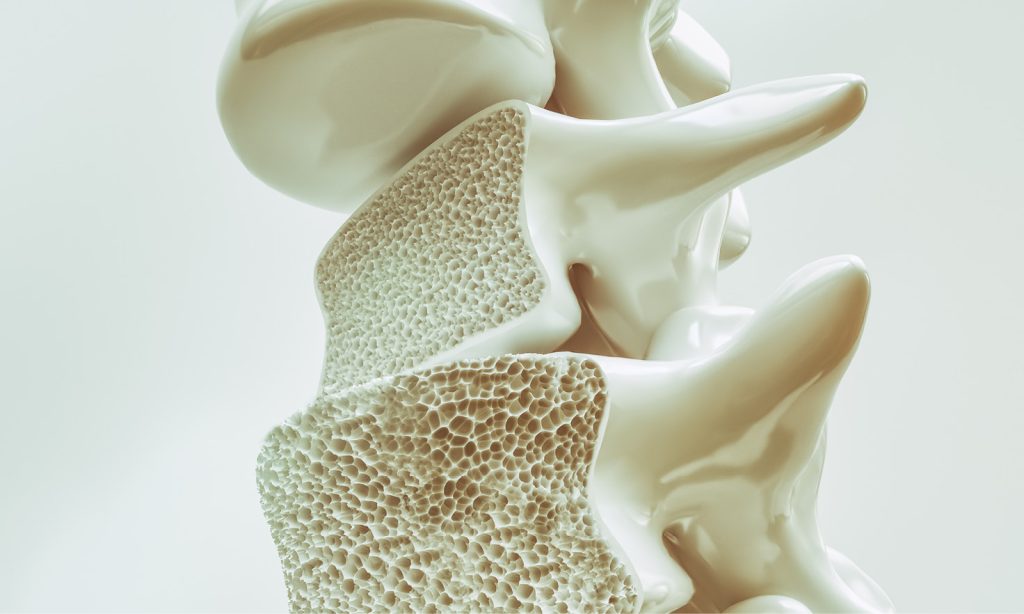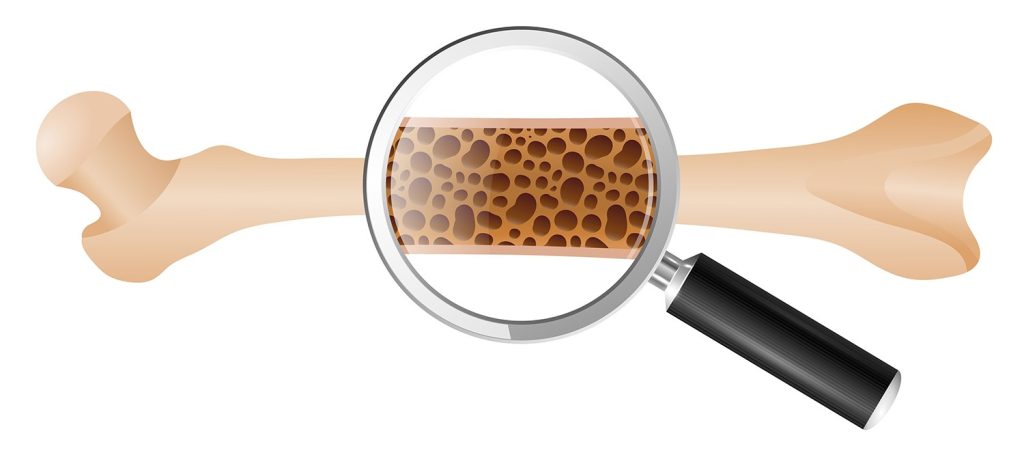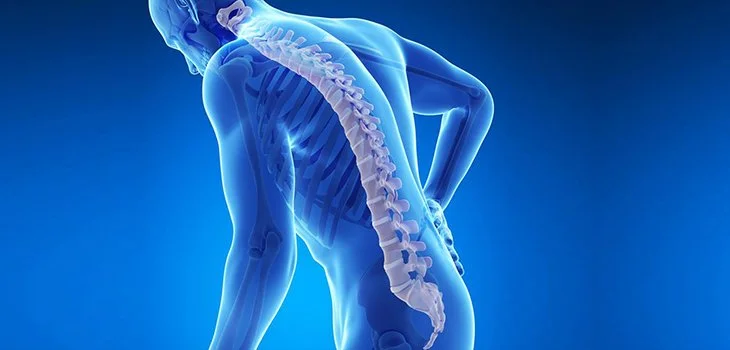Osteoporosis is a condition in which bones become weak, brittle, and more likely to break due to a loss of bone mass and density. It often occurs with aging, especially in postmenopausal women, but can affect anyone. The condition usually develops slowly and silently, with fractures (especially in the hip, spine, or wrist) often being the first noticeable sign.

Osteoporosis is often called a “silent disease” because it typically develops without noticeable symptoms until a bone fracture occurs. As the condition progresses, a person may experience signs such as back pain, which can result from a fractured or collapsed vertebra, and a gradual loss of height or the development of a stooped posture. Bones affected by osteoporosis become weak and brittle, making them more susceptible to fractures, even from minor falls or simple movements like bending or coughing. The most common fracture sites include the hip, spine, and wrist. Because symptoms may not appear until significant bone loss has occurred, early screening and prevention are important, especially for individuals at higher risk.
Symptoms of Osteoporosis
Osteoporosis is often called a “silent disease” because it develops slowly and usually shows no symptoms until a bone breaks. However, as the condition progresses, certain signs may appear.
Common Symptoms Include:
- Bone fractures from minor falls or injuries (especially in the hip, spine, or wrist)
- Back pain, often caused by a fractured or collapsed vertebra
- Loss of height over time
- Stooped posture (kyphosis or a hunched back)
- Brittle bones that break more easily than expected

Osteoporosis can be managed and treated through a combination of lifestyle changes, proper nutrition, exercise, and medications. A balanced diet rich in calcium and vitamin D is essential for maintaining strong bones, while regular weight-bearing and resistance exercises help improve bone density and prevent further loss. Lifestyle modifications such as quitting smoking, limiting alcohol, and fall prevention measures—like improving home safety and maintaining good balance—can significantly reduce fracture risk. In more severe cases, doctors may prescribe medications such as bisphosphonates, denosumab, or hormone therapy to slow bone loss or even stimulate new bone growth
Osteoporosis – Solutions and Management
1. Nutrition
- Calcium-rich foods (milk, yogurt, leafy greens)
- Vitamin D (sunlight, fortified foods, supplements) – helps the body absorb calcium
2. Exercise
- Weight-bearing exercises (walking, dancing, climbing stairs)
- Resistance training (light weights or bands)
- Balance and flexibility exercises (yoga, tai chi) – help prevent falls
3. Medications
Doctors may prescribe medications to slow bone loss or build bone:
- Bisphosphonates (e.g., alendronate, risedronate)
- Denosumab
- Hormone therapy (for postmenopausal women)
- Parathyroid hormone analogs (e.g., teriparatide)
- Romosozumab – builds new bone
4. Lifestyle Changes
- Quit smoking – tobacco weakens bones
- Limit alcohol – excessive alcohol increases fracture risk
- Prevent falls – use grab bars, improve lighting, wear supportive shoes
